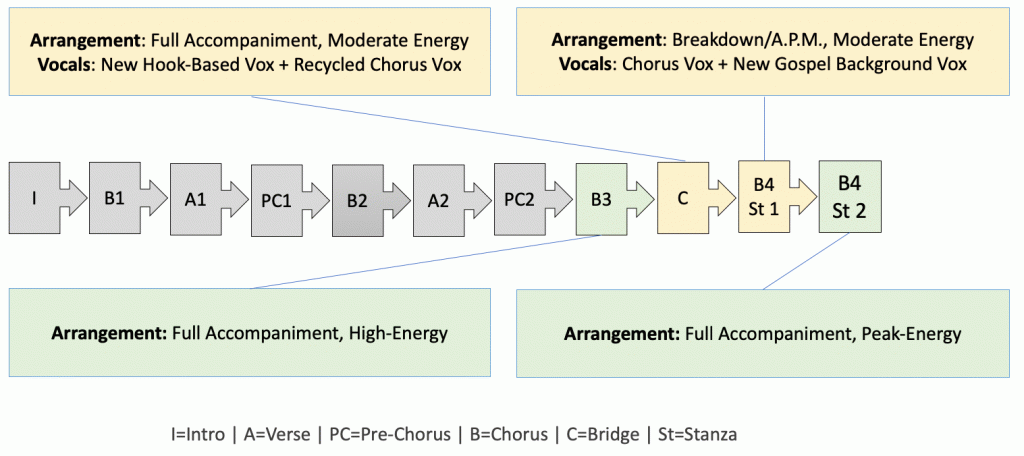Artist: Shawn Mendes
Songwriters: Nate Mercereau, Scott Harris, Shawn Mendes, Teddy Geiger
Producers: Shawn Mendes, Teddy Geiger
Record Label: Republic
Primary Genre: Pop
Influences: Tropical-Dancehall, Rock, Dance, Funk, Gospel, R&B
If I Can’t Have You contains two back-to-back “D” sections in its framework; a bridge, which occurs exactly three-quarters of the way into the song, and a breakdown chorus stanza, which directly follows. Both “D” sections feature a combination of new and recycled material from other song sections, which heightens engagement while maintaining some degree of familiarity.
As a refresher, a “D” section is a term we, at Hit Songs Deconstructed, use for a section that provides a pronounced lyrical, vocal, instrumental and/or energy level departure between two-thirds and three-quarters of the way into a song. The purpose of the “D” section is to heighten engagement by providing the listener with new material after they’ve become familiar with the preceding sections (e.g. verse, pre-chorus and/or chorus). This contrast breaks up the repetition and draws the listener in further.


As shown above, If I Can’t Have You goes through quite a few sections before reaching the first departure, one of a few reasons the double-departure is so effective in this song.
Following a brief two-second intro, Mendes kicks off with a chorus. This intro – chorus progression is followed by two back-to-back verse – pre-chorus – chorus sectional progressions, meaning the audience has heard the chorus three times already by the 2:20 mark, and the verse and pre-chorus sections twice. At this point the song straddles the line between familiarity and redundancy, a perfect position to be in for departure section writing. Together, the two back-to-back “D” sections, the bridge and breakdown chorus, effectively heighten engagement through the contrast they provide, while simultaneously heightening memorability through the familiarity imparted.
What are some things to keep in mind when formulating your “D” sections?
- What are some things to keep in mind when formulating your “D” sections?
- What is the energy of the sections bookending the departure? Does the departure warrant a decrease in energy, increase in energy, or both?
- What is the arrangement of the sections bookending the departure? Does the departure warrant a sparser arrangement, fuller arrangement or both?
- What can you do to both heighten familiarity with other song sections while simultaneously providing pronounced contrast?
- If using a bridge “D” section, what lyrical twist do you want to provide in the scope of the narrative, and how can you accentuate its impact through instrumental and vocal choices while providing contrast relative to the sections that both precede and follow?
- Is there a clever twist that you can provide in your departure, such as an A.P.M. (audience participation moment) technique or engaging interaction between vocalists in the case of a duet?
For a full analysis of all the different techniques employed in these “D” sections and how they are impacting If I Can’t Have You, visit the Hit Song Techniques Library, one of the many songwriting and production resources included in your Hit Songs Deconstructed subscription.
TO LEARN MORE ABOUT THE HIT SONG TECHNIQUES LIBRARY, WATCH THIS VIDEO:



